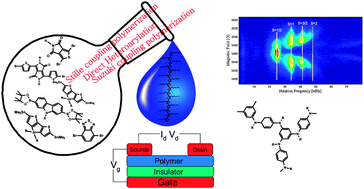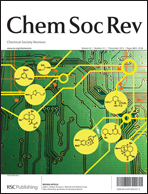Polymers for electronics and spintronics
Abstract
This critical review is devoted to semiconducting and high spin polymers which are of great scientific interest in view of further development of the organic electronics and the emerging organic spintronic fields. Diversified synthetic strategies are discussed in detail leading to high molecular mass compounds showing appropriate redox (ionization potential (IP), electron affinity (EA)), electronic (charge carrier mobility, conductivity), optoelectronic (electroluminescence, photoconductivity) and magnetic (magnetization, ferromagnetic spin interactions) properties and used as active components of devices such as n- and p-channel field effect transistors, ambipolar light emitting transistors, light emitting diodes, photovoltaic cells, photodiodes, magnetic photoswitches, etc. Solution processing procedures developed with the goal of depositing highly ordered and oriented films of these polymers are also described. This is completed by the description of principal methods that are used for characterizing these macromolecular compounds both in solution and in the solid state. These involve various spectroscopic methods (UV-vis-NIR, UPS, pulse EPR), electrochemistry and spectroelectrochemistry, magnetic measurements (SQUID), and structural and morphological investigations (X-ray diffraction, STM, AFM). Finally, four classes of polymers are discussed in detail with special emphasis on the results obtained in the past three years: (i) high IP, (ii) high |EA|, (iii) low band gap and (iv) high spin ones.


 Please wait while we load your content...
Please wait while we load your content...